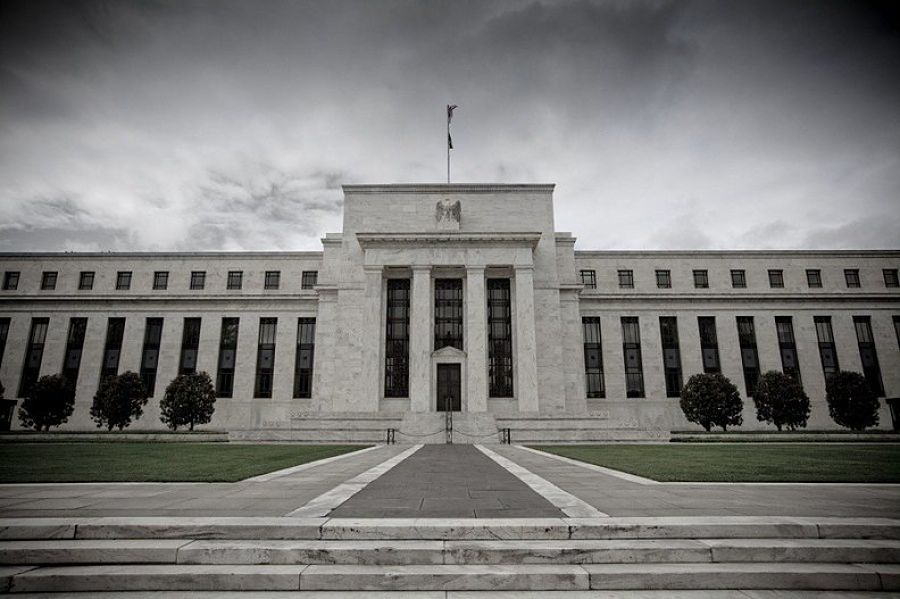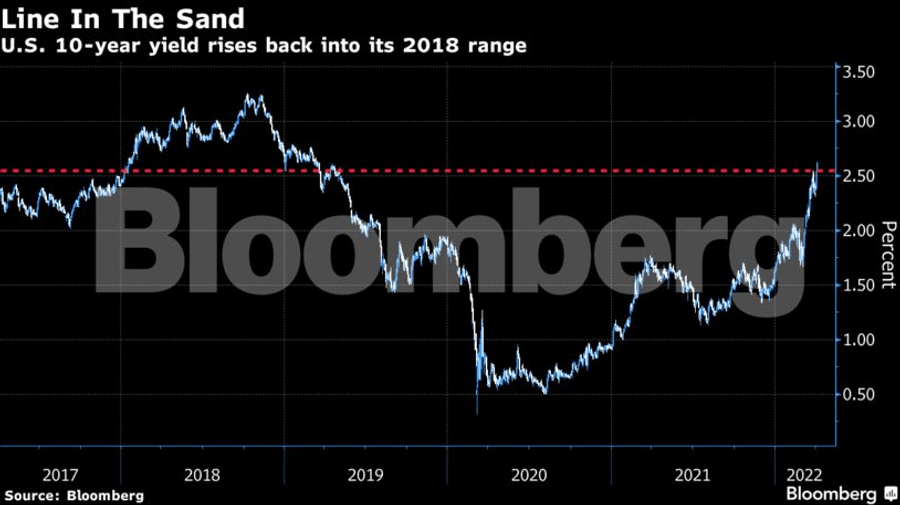

This year’s unprecedented global bond rout accelerated after Federal Reserve Governor Lael Brainard said the U.S. central bank will likely step up policy tightening by swiftly reducing its massive debt holdings.
The prospect of aggressive Fed action drove the yield on benchmark 10-year Treasuries up five basis points to 2.60%, propelling it back into ranges seen in 2018 and 2019. The yield spiked as much as 17 basis points on Tuesday. Australian bonds slumped, with 10-year yields climbing as much as 13 basis points to 2.98%, the highest since 2015.
Bonds worldwide are extending losses this week after completing an eight-month losing streak, the longest on record, according to the Bloomberg Global Aggregate index. Investors are dumping fixed-income securities as policy makers move to raise interest rates in the face of surging global inflation and tightening labor markets. The Reserve Bank of Australia became the latest central bank to take a hawkish tack, dropping a reference to remaining “patient.”

“The path of least resistance is for yields to head higher so we expect rallies are likely to be shallow as they will be sold into,” said Prashant Newnaha, Asia-Pacific rates strategist at TD Securities in Singapore. “It’s unlikely Fed Chairman Jerome Powell will tone down Brainard’s hawkish stance when he speaks next, and CPI next week is also likely to keep bonds offered into the release.”
Brainard, who is awaiting Senate confirmation to become Fed vice chair, said on Tuesday that the central bank “will continue tightening monetary policy methodically” and will start “to reduce the balance sheet at a rapid pace as soon as our May meeting.”
The comments on the Fed’s so-called quantitative tightening added fuel to a rout that had already driven Treasuries to the worst losses in decades this year as traders braced for an aggressive series of rate hikes. Yields also rose on sovereign bonds across Europe Tuesday, while New Zealand 10-year yields jumped 17 basis points to 3.42% on Wednesday.
“The market appears to be expecting fairly hawkish communication regarding the Fed’s tapering intentions, from the upcoming FOMC minutes” due Wednesday, said Andrew Ticehurst, a rates strategist at Nomura Inc. in Sydney. “Our U.S. colleagues expect three consecutive half-point Fed hikes and an eventual 3.75% to 4% peak in the Fed rate. Combined with fairly aggressive balance sheet run-off, this suggests that U.S. yields have not yet peaked.”
Swaps markets anticipate the Fed will start increasing rates by more than a quarter percentage point at a time, with greater than 80% odds of a half-point move priced in for the May meeting. Overall, around 2.22 percentage points of additional hikes are priced in for the next six meetings through December, up from 2.13 on Monday.
“The whole Fed tightening narrative is being moved up in time and magnitude,” said William O’Donnell, a strategist at Citigroup Inc. “QT is coming in May. They want to go sooner and bigger in terms of shrinking the balance sheet.”
Brainard said shrinking the Fed’s balance sheet would occur “considerably more rapidly than in the previous recovery, with significantly larger caps and a much shorter period to phase in the maximum caps compared with 2017–19.”

Relationships are key to our business but advisors are often slow to engage in specific activities designed to foster them.

Whichever path you go down, act now while you're still in control.

Pro-bitcoin professionals, however, say the cryptocurrency has ushered in change.

“LPL has evolved significantly over the last decade and still wants to scale up,” says one industry executive.

Survey findings from the Nationwide Retirement Institute offers pearls of planning wisdom from 60- to 65-year-olds, as well as insights into concerns.
Streamline your outreach with Aidentified's AI-driven solutions
This season’s market volatility: Positioning for rate relief, income growth and the AI rebound
